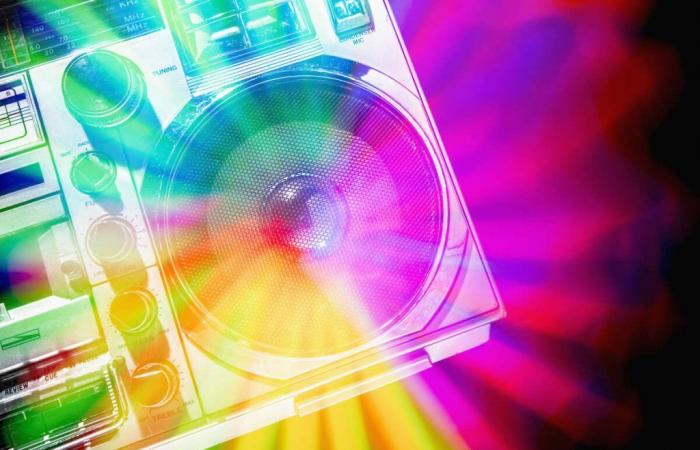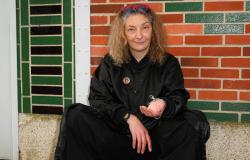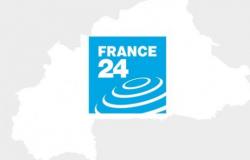The audiovisual regulator presented on Tuesday its recommendations to promote access to digital terrestrial radio (or DAB +), the use of which is struggling to establish itself, to the entire population within ten years .

20% of radio is now listened to digitally, compared to 80% terrestrially. Photo PM Images/Getty Images
By Sophie Gindensperger
Published on June 18, 2024 at 12:22 p.m.
La digital terrestrial radio (RNT or DAB + for digital audio broadcasting) will she one day succeed in establishing herself? In any case, this is the wish of Arcom, which chose the symbolic date of June 18 – General de Gaulle’s call on the airwaves – to publish a Radio white paper, presented this Tuesday by its president, Roch-Olivier Maistre. “For more than a year, we met with players in the sector and conducted dozens of hearings,” explains Hervé Godechot, head of the regulator’s “Radios and digital audio” working group and pilot of this report. With, as a result, a plan to continue the deployment of DAB +, the adoption of which has struggled to take hold since the first tests in 2007.
As with television, this technology nevertheless presents real advantages: access to a large number of frequencies, continuous listening (for example on the move) and better sound quality. But large groups, in particular, were reluctant to take advantage of this new technology, taking a dim view of the entry of new competitors into the advertising market.
Read also :
DAB+: digital terrestrial radio conquering the airwaves
Arcom therefore continues to support the deployment of DAB+ in the region at all costs. The report firstly echoes the grievances of a sector which faces an advertising market in “trend decline”to an increase in its operating costs due to the economic context − and, for stations which have already switched to digital radio, to the costs linked to double broadcasting, as long as analogue remains. “This is the first time that Arcom has offered such a precise picture of the radio sector as it exists today, while putting on the table the necessary prerequisites to enable a total transition to DAB +,” welcomes Hervé Godechot.
Among these avenues, one is one of the long-standing requests of private radio stations: to simplify, or even lighten, the legal notices, these sentences which aim to protect the consumer, hastily soaped up at the end of the advertising spot. “They have a good intention but take up a lot of air time. On this theme, the radio stations’ request does not seem illegitimate to us and we propose to open the debate. he adds. This report also envisages an adaptation of audio quotas, which aim to promote French-speaking songs – constraints that streaming offers obviously do not have.
Avoid Gafam-type intermediaries
It is difficult, however, to fight against current market trends. Certainly, the attachment and trust placed in audio media are strong (as indicated in the introduction to this White Book). But it structurally loses listeners each year (38.7 million at the start of 2024, compared to 42.8 in 2018, according to Médiamétrie). The way of listening is also changing: 80% terrestrial, and 20% digital. Digital use is booming, and has increased by 63% in five years (it affected 17% of the population in 2023, compared to 11% in 2015).
Practical when you have access to it via your mobile phone, so-called “IP” listening however has a major drawback in the eyes of the regulator: it requires at least one intermediary, the access provider, which excludes free and anonymization allowed by the good old waves. This also opens the door to possible intermediaries such as Gafam, who could impose their conditions on the radios. “If nothing is done, it is possible that one day listening to radio on the Internet will be the majority, or even exclusive, and will therefore no longer be accessible free of charge to listeners, underlines Hervé Godechot. We must preserve a majority of terrestrial broadcasting to guarantee the sovereignty of radio stations over their broadcasting, without intermediaries. »
Read also :
Pluralism in audiovisual: Arcom is getting organized, but it’s not going to be simple
Although today more than 61% of the population is covered by DAB +, the technology still suffers from a significant lack of awareness – some people are sometimes unaware that they have access to it via, for example, their car radio. And if information campaigns are expected to be strengthened, the question of equipping listeners remains crucial: to benefit from this technology, they must be equipped with a suitable receiver. However, this is not the case today for all FM sets on sale commercially, as manufacturers do not have this obligation (which only concerns radio receivers equipped with an alphanumeric display). The evolution of this rule, a desirable measure in the eyes of Arcom, was also included in Senator Lafon’s bill on the reform of public broadcasting, now better known under the name “Merger of audiovisual public”, and which should have been discussed in the Assembly from June 24, before the dissolution changed the situation.
By 2027, Arcom wishes “constitute a balanced radio ecosystem, in a legislative and technological environment which will allow its digitalization to continue under good conditions”, to then launch a phase of “migration”with a target of 2033 for “completion of the transition”. Without giving a date for the total extinction of the FM band: experience has shown that, on this subject, calendars can be fluid.






